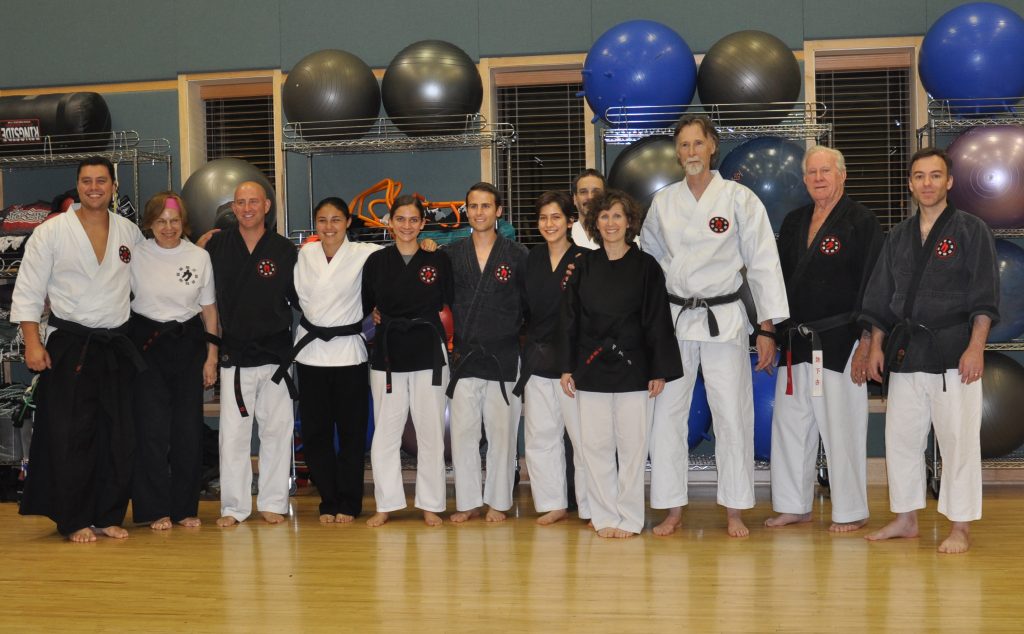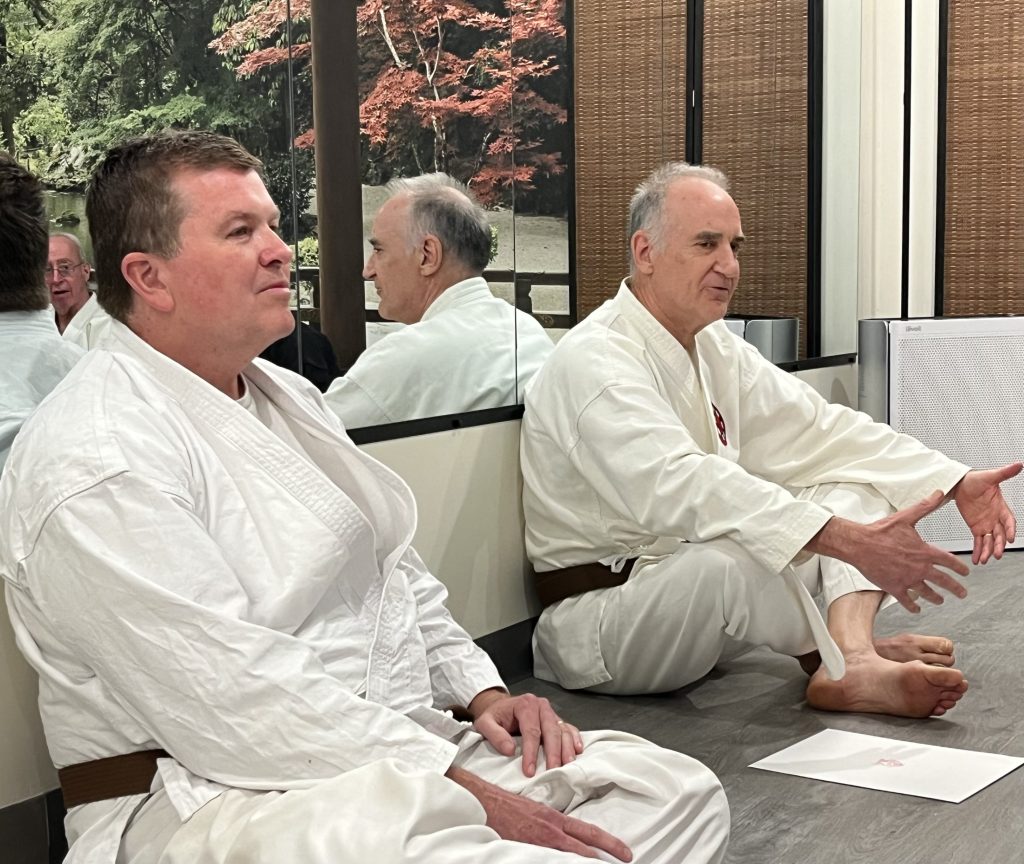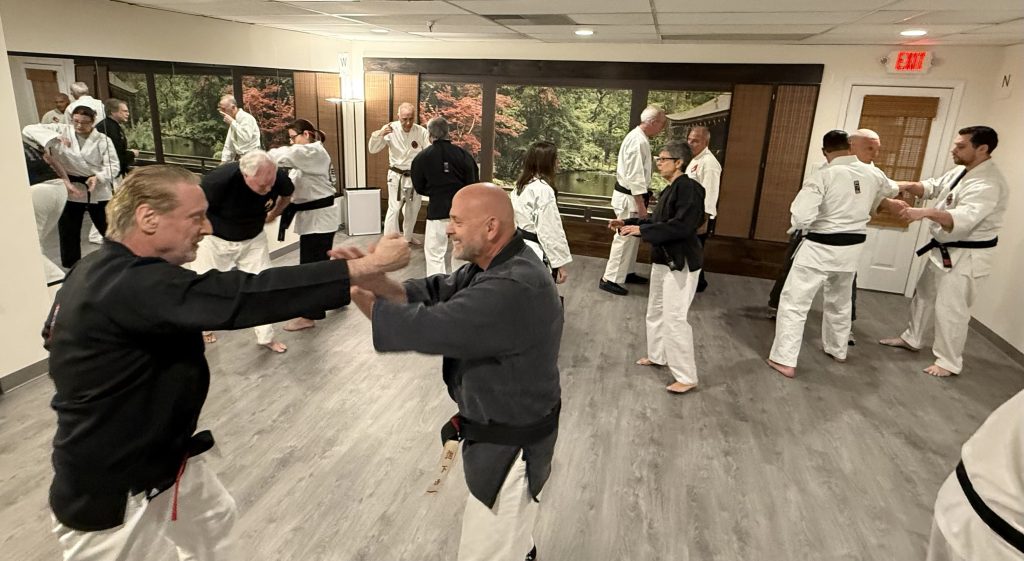A Japanese swordsmith will tell you that no two crafted blades are the same. Likewise, no two karate black belts ever turn out with identical skills. Look at your family, if you are a sibling, or have siblings of your own, are they identical? Parents can birth wildly different offspring. So it goes in the martial arts. Each new Shodan is a unique living blade, forged in the cooperative sweat and commitment of the sensei and disciple to ensure the lineage passes on. What is this lineage? The instructor’s belief in what makes a black belt. No two sensei will produce the same living blade. We may share common ideologies and techniques but our work is as distinctive as our fingerprints.

Black Belts at the Chatham Club, 2012
As significant it is for the kyudansha’s (colored belt) ascent through the belt ranking system to reach the coveted Kuro Obi, few stop to consider that this accomplishment would never have happened if one’s teacher had slacked off in the process. Every sensei is tasked with the art of abiding to his blade-making. He must direct the student’s mindset, properly pace the training, introduce layers of new material, correct and challenge where necessary. This process is often fraught with unexpected twists and turns. There’s the student who one day just disappears after years of mutual sweat and tears. Or the unfortunate dojo misunderstanding or accident that sharply terminates the dojo relationship. A disciple can lose interest, fall in love, no longer afford training, get sidelined by injury, hit a wall of boredom, unsurety or confidence. The wise sensei must intervene with the right remedy to remove the obstruction(s), or all is for naught.
The average time to craft a black belt in our dojo is a minimum of 5-7 years, attending class 2/3 times a week consistently, along with training on one’s own where one can. Of course, there are exceptions, depending upon what one brings to the table from prior experiences. The U.S. Special Forces medic did it under two years. Others spread it out over decades. I remember doing a survey after a mother of a 10-year-old boy complained that all the other children in the class had been promoted before her son. She was wrong. She didn’t understand to each his or her own pacing. It’s not a competition. It is a journey and everyone’s path is deeply personal.
For a student to succeed they must trust in the process. It works. I don’t think a single black belt has ever regretted their journey.

At the Fireball Throwing seminar in Florham Park on March 24th, Bob Tighe, lft. and Carlo Bracco, rgt. received their Shodan Black Belt ranking. Later, the newly appointed each burned a white origami crane, representing the end of the old and beginning of their new journey as yudansha.

The seminars are going well. The enthusiasm has been high.
Through an arrangement via Jay Austin, I had a lengthy conversation with noted isshinryu Sensei Mike Calandra (isshinryu), who currently lives in Arizona. I was curious to what degree Sensei Calandra might be familiar with Kiko principles. Sensei Calandra has invited me on his Martial Truth podcast, to discuss the topic. The date is pending.
My Middle Grade novel, Star Quest Sensei and the Flying S is done! Now comes the hard task of finding a publisher. If you have any thoughts, let me know.

